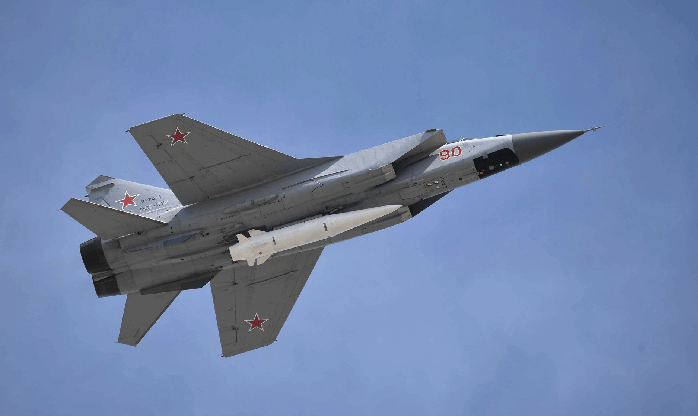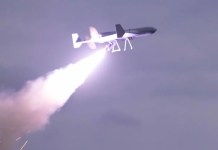A month before US Presidential Elections, Donald Trump has isolated himself after developing symptoms for Covid-19, and while in isolation he’ll be sweltering over the news that Russia’s premier Su-57 fighter jet could soon be integrated with a deadly hypersonic missiles.
After Apaches, Chinooks & Poseidons, Boeing Looks To Ink Two Major ‘Fighter Jet’ Deals With India
The developments are likely to strike a sense of anxiety amongst developers and users of the US-made fifth-generation F-35 stealth fighter jets which have in recent times continued to be the torch-bearers when it comes to combat capabilities of modern warplanes.
The blend of Russia’s most advanced fifth-generation stealth fighters Su-57 and the Kh-47M2 Kinzhal nuclear-capable hypersonic missile would be lethal. It could most certainly sway the power in favor of Vladimir Putin, who has in the past envisaged use of a retaliatory atomic attack to defend his homeland.
As reported by a Russian state news agency earlier this week, the Su-57s were planned to be integrated with hypersonic missiles. “In accordance with Russia’s State Armament Program for 2018-2027, Su-57 jet fighters will be equipped with hypersonic missiles. The jet fighters will receive missiles with characteristics similar to that of the Kinzhal missiles, but with inter-body placement and smaller size.” said a defense industry insider.

The Russian-made Kh-47M2 Kinzhal also known as the “dagger” is a nuclear-capable air-launched ballistic missile (ALBM), which has a claimed range of more than 2,000 kilometers, and a maximum speed of Mach 10.
The missile which entered service in 2017 has the ability to perform evasive maneuvers at every stage of its flight and can carry both conventional and nuclear warheads. It was one of the six new Russian strategic weapons unveiled two years ago by Putin, who had said back then:
“The missile flying at a hypersonic speed, 10 times faster than the speed of sound, can also maneuver at all phases of its flight trajectory, which also allows it to overcome all existing and, I think, prospective anti-aircraft and anti-missile defense systems, delivering nuclear and conventional warheads in a range of over 2,000 kilometers.”
According to repeated claims made by Russia’s Ministry of Defence, the missiles are invulnerable to existing air and anti-ballistic missile defenses and are designed to destroy enemy air defense systems such as land-based Aegis batteries.
Earlier, the General Director of the Tactical Missiles Corporation (KTRV), Boris Obnosov, had hinted the equipment of hypersonic missiles on the Su-57. “In perspective, we can certainly anticipate this [hypersonic] weaponry over the following decade. Everything will come in due time for the Su-57, likely including hypersonic weapons,” said Obnosov.
While there has been no official confirmation on the news by the Russian Defence Ministry, the potential integration of hypersonic missiles with Su-57’s fifth-generation stealth capabilities seems to be a mouth-watering prospect for Moscow in terms of bolstering their strike capabilities.
Su-57 Fighter Jet
The Su-57 which took its first flight in 2010 is Russia’s most advanced fighter jet. It boasts stealth technology by the use of composite materials and innovative technologies and the fighter’s aerodynamic configuration ensures the low level of radar and infrared signature.
The fighter which is right up to the pedigree of American stealth counterparts, the F-35s and the F-22 Raptors, has been designed to have supercruise, supermaneuverability, stealth, and advanced avionics to overcome the prior generation fighter aircraft as well as ground and naval defenses.
While the integration process should definitely enable Moscow to pitch forward the fighter jets in a market which has in the past salivated over the F-35, what remains to be seen is whether Moscow will be able to address the complexities arising out of fitting the Kinzhal missiles onto the Su-57 without compromising the fighter jet’s stealth capabilities.




